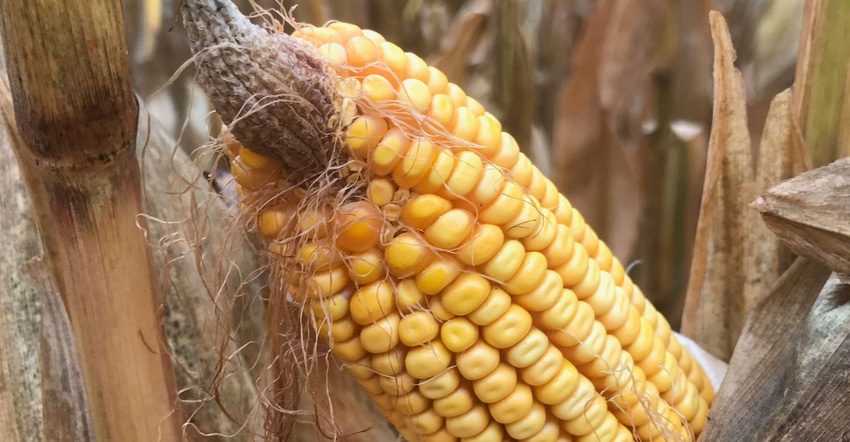March 21, 2019

In 2016, reports of corn ear formation problems ranged from Dawson to Saunders counties in Nebraska to sites in Kansas, the Texas Panhandle and eastern Colorado — despite high-reported yields that year.
It would be easy to assume that after decades of research, the ins and outs of corn development would be completely understood. However, the ear deformity problems that continue to plague some farmers are causing researchers to ponder what might have caused these issues.
Research by the University of Nebraska-Lincoln and Nebraska Extension suggests uneven or delayed emergence of corn plants may be a factor. Differences in planting date, soil moisture, soil temperature and seeding depth may result in delayed or uneven emergence.
Secondary factors such as insect feeding, disease pressure, soil crusting and herbicide injury also can cause delayed emergence.
Much literature has been published describing factors that affect corn ear development, including herbicides at the V3 to V4 stages, planting density, environmental conditions, insect damage, and many other biotic and abiotic factors. These factors often result in corn ear malformation and can result in significant decreases in yields.
Three ear formation symptoms were consistently observed during the 2016 growing season:
• barbell- or dumbbell-shaped ears
• short husks with normal ear length
• multiple ears per node
A Nebraska research project during the 2018 growing season aimed to determine whether delayed planting dates affected plant growth (leaf height, stem diameter and internode length) and ear formation issues in corn.
The project, conducted under field conditions at the UNL South Central Ag Lab near Clay Center on a field previously planted with soybeans, compared susceptible (ear issues had been observed in the past) and nonsusceptible (control) hybrids planted at different dates in 12-day intervals over a five-week period from April 23 to May 30.
The field was irrigated with a linear irrigation system as needed, a base fertilizer rate was applied before planting, and all plots were planted at 34,000 seeds per acre.
Researchers measured stem diameter at ground level and the height of the last developed collar leaf starting at V12, and internode length at R2. Ear problems were evaluated at early R2 in 10 previously marked plants.
How did planting date affect corn growth?
Stem diameter
Planting date and hybrid both affected stem diameter. The second and fourth planting dates had the smallest mean diameter out of the four dates. There was no difference between planting dates one and three, as well as planting dates one and four. On the hybrid side, there were differences between the diameters of the check and susceptible hybrids, with the check hybrid having larger diameters.
Height of last developed leaf
Hybrid and planting date both affected the collar height of the last developed leaf. For the check hybrid, the first three planting dates had similar heights, but there was a reduction in height for the last planting date.
The effects of planting date for the susceptible hybrid were similar to the check hybrid — for both, the last planting date had a significantly lower height than the first three planting dates. By July 16, the first three planting dates showed similarities in leaf height despite 24 days of difference in planting times.
Average internode length
Similar to leaf heights, there were hybrid and planting date effects on the average internode length. Both hybrids had similar trends with greater internode lengths observed for the last two planting dates.
This suggests since late-emerged plants (last two planting dates) had longer internodes and either similar or shorter heights of the last collared leaf compared with early-emerged plants (first two planting dates) that node numbers were fewer with the later-planted corn. So, internode expansion rates likely were more rapid with later planting dates.
Ear formation
Few ear issues were observed after assessing plots, except for a few plants with short husks in susceptible hybrids, and there was little to no difference between all four planting date treatments. This may be because of a lack of conducive conditions during 2018 growing season.
Still, researchers believe planting date is a relevant factor, since ear development occurs at a sequence of key stages and environmental effects triggering ear issues must have different results when plants are at different stages (consider the interaction between hybrid, environment and management). This research will continue in 2019 and 2020.
Source: UNL CropWatch, which is solely responsible for the information provided and is wholly owned by the source. Informa Business Media and all its subsidiaries are not responsible for any of the content contained in this information asset.
You May Also Like




